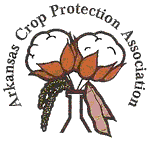Reed won a first place award with a presentation titled “Influence of Cultivar and Drill Row Width on Weed Control in Flooded Rice.”. Problematic weeds such as barnyardgrass (BYG) in a rice production system cause complications like yield loss, increased input costs, and difficulty with harvest. The fast evolution of herbicide resistance in weeds and further restrictions on herbicides have emphasized the need for cultural management strategies such as drill row width manipulation and the use of more competitive cultivars. The objective of this research was to document the effect of drill row width and rice cultivar on weed management and crop canopy development. A field experiment was conducted in 2021 and 2022 at Lonoke, AR as a randomized complete block split-plot design. Four rice cultivars [medium-grain (CLM04), long-grain in-bred (CLL16), and two long-grain hybrids (RT7301 and RT7521 FP)] were drill-seeded in four drill row widths (5-in, 7.5-in, 10-in, and 15-in). Weed density was assessed at the 5- to 6-leaf rice stage (preflood) and preharvest. Aerial imagery from a small unmanned aerial system (sUAS) was also taken at the 5- to 6-leaf stage and panicle differentiation rice stage and analyzed using Field Analyzer. All data were analyzed using JMP Pro 16.1 and subjected to ANOVA using Tukey’s HSD (P=0.05). No interaction between drill row width and rice cultivar was observed, regardless of the response variable. For 2021 at the 5- to 6-leaf rice stage, there was a 38% reduction of barnyardgrass in the standard 7.5 in row spacing than the 10 and 15 in and a 40% reduction of BYG in the 2022 year. A 31 percentage point increase in BYG control was observed for the 7.5 in spacing over the 15 in spacing at the preharvest stage for the 2021 year and a 40-percentage point increase in control occurred for the same row widths at the rice stage for the 2022 year. Based on the sUAS imagery at panicle differentiation, there was a 20% reduction of canopy coverage from the 15 in spacing than the 7.5 in. The standard rice row width of 7.5 in still shows to have the greatest weed control over larger widths like the 15 inch and in general a narrower row suppresses more weeds than a wider width.
Smith won a first place award with a presentation titled “Palmer Amaranth Control in Cotton Utilizing Integrated Weed Management Strategies.”. Palmer amaranth exhibits rapid growth and can evolve resistance to herbicides, making it one of the most troublesome weeds to manage. Because of the prolific nature of Palmer amaranth, crops that require longer durations for canopy development like cotton and soybean, are more susceptible to yield losses associated with this weed. Integrated weed management practices utilize multiple weed management techniques to control problematic weeds, such as Palmer amaranth within the field. In the fall of 2018, a long-term cotton weed control trial was initiated at the Lon Mann Cotton Research and Extension Center near Marianna, Arkansas. The objective of this trial was to evaluate the impact of four integrated management strategies on Palmer amaranth emergence over time. The treatments consisted of tillage, cover cropping with cereal rye, herbicide treatments, and zero-tolerance. In 2018, a one-time tillage event was performed, and the effects were monitored over four years. In 2019, tillage provided a 75% reduction in Palmer amaranth emergence, averaged over other factors. In 2020, 2021, and 2022, Palmer amaranth emergence was reduced by 42, 53, and 57%, respectively, compared to the absence of a one-time moldboard plow event. Findings show that the implications of a one-time deep tillage event in cotton on long lasting effects on Palmer amaranth emergence, reducing selection for resistance to herbicides relied upon within cotton.

